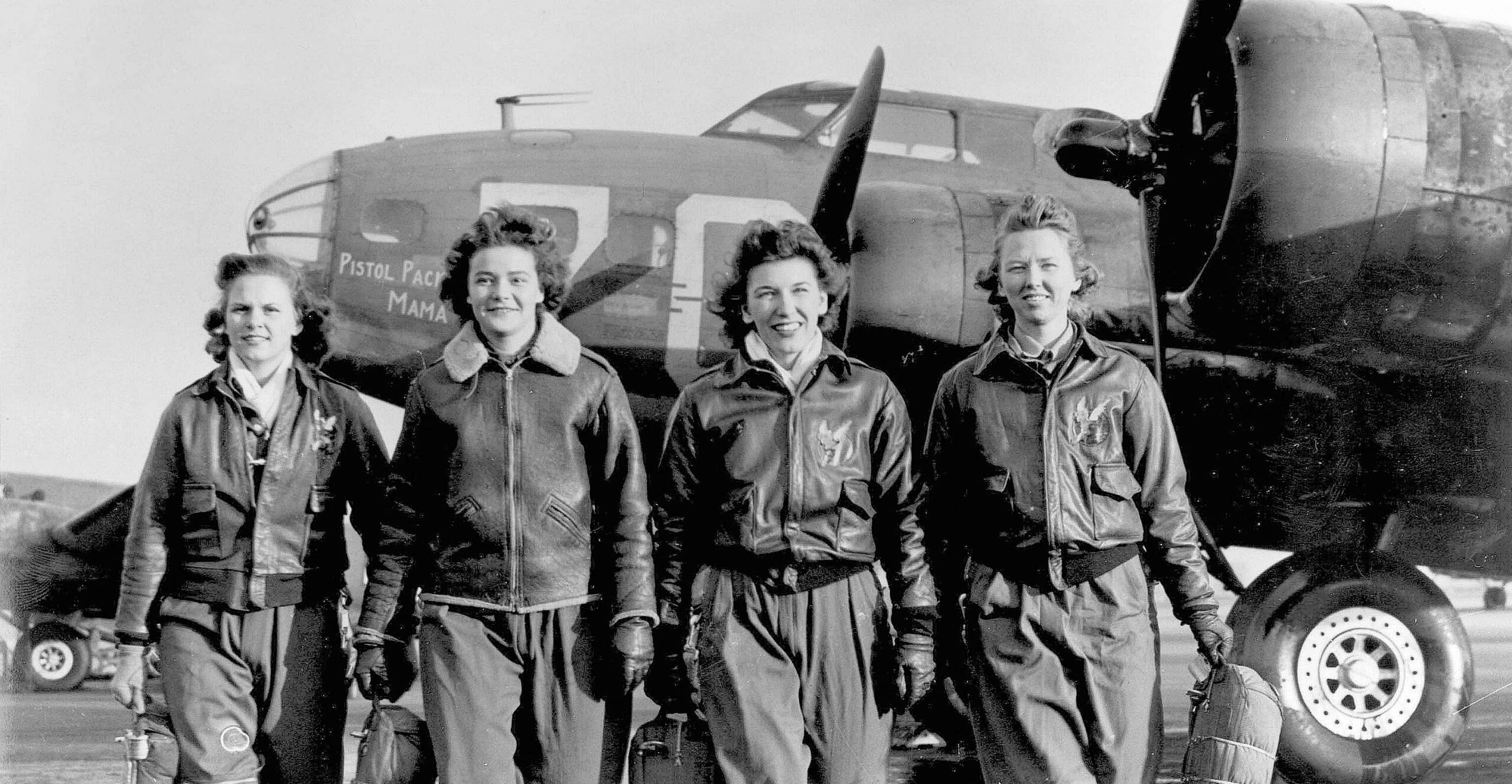Days after the attack on Pearl Harbor brought the United States into the Second World War, President Franklin Roosevelt’s wartime confidante, Anna Rosenberg, exhorted American women to “keep things going, no matter what happens… to take the men’s places in the shops and factories… We must carry on when those we hold dearest are fighting.” Like her commander-in-chief, Rosenberg knew WWII would be different from all others. “War is no longer confined to trenches and battlefields,” she said.
She was right. As never before, women were pulled by the gravity of a total war that stretched from Singapore to Stalingrad. Women risked torture and death as spies; they chronicled the war as correspondents; they built the bombers that delivered deadly payloads over enemy cities; they tormented the enemy as partisan fighters; shouldered rifles in combat; deciphered codes; and helped guide their nations as policy-makers. Some were perpetrators of violence as unspeakable as that of men. Millions were victims.
The war pulled in Anna Rosenberg, too. In 1944, just weeks after D-Day, she was racing across France with the soldiers of General Patton’s army. Anna was a special emissary of President Roosevelt, but she refused special treatment. She slept in cold tents, shared rations with the men, and saw the dead in ruined villages and cities. She also listened to their hopes and dreams should they make it home alive. The data Rosenberg collected in the war zone in 1944 and again in ’45 gave the G.I. Bill of Rights the educational thrust which would transform postwar America. But on her two missions to Nazi-occupied Europe, the ticker-tape parade down Broadway was but a dream.
Whether in New York, Paris, or Seoul, the sacrifices of wartime women were hardly known or almost immediately forgotten. War-workers took off their aprons and service-members quietly returned to civilian life, attentive to male pride and eager to settle down. Women spies kept their secrets, and women journalists handed over their microphones to their male counterparts.
In Asia, the so-called “comfort women” were, for decades, stonily silent with shame. In the Third Reich, the women who indulged in the barbaric violence against Jews remained anonymous. For the millions of girls and women who died between 1939 and 1945 the silence was eternal.
Just weeks after the end of the war, Anna Rosenberg became the first American, man or woman, to be awarded the Medal of Freedom. President Harry Truman cited her “exceptionally meritorious service in the prosecution of the war against the enemy.” For the next two decades Anna Rosenberg continued to shape American policies in war and peace before she, too, faded from the historical discussion. With The Confidante, I hope to return her to a place commensurate with her impact on modern American history.
After decades of relative silence, several recent works have uncovered the stories of the women who did their part to fight totalitarianism. As war again rages in Ukraine, where untold numbers of women died eight decades ago, these works have a timely resonance.
*
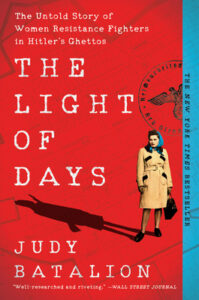
The Light of Days: The Untold Story of the Women Resistance Fighters in Hitler’s Ghettos by Judy Batalion
At the bottom of a box of documents in the British Museum were dusty notebooks written in Yiddish. When Judy Batalion, the granddaughter of Polish Holocaust survivors, dusted them off she unearthed the long-lost stories of the brave Jewish women who conducted their own secret war against German soldiers from within Poland’s Jewish ghettos. In Krakow, Warsaw, and Będzin, these young women smuggled weapons, couriered coded messages, and lured flirting German soldiers to their deaths.
To do their work, some passed as Aryans, and others pretended to be Christian. Many of them, like Renia Kukielkher, were teenagers. All risked their lives. The book’s descriptions of Nazi sadism, often victimizing women and children, are difficult to read, but it makes the resourcefulness and courageousness of the “ghetto girls” all the more admirable.
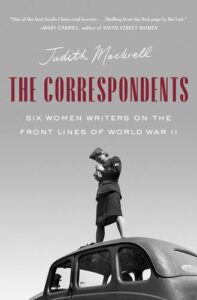
The Correspondents: Six Women Writers on the Front Lines of World War II by Judith Mackrell
In late August 1939 reporter Clare Hollingworth was on assignment near the German-Polish frontier. When a gust of wind blew a large tarp skyward, Hollingworth saw in the valley below massed German armor and thousands of troops. She had the scoop of the century: Germany was about to invade Poland and start World War II. The six pioneering journalists in Mackrell’s well-researched book include Martha Gellhorn, known for her reporting and her marriage to Ernest Hemingway, and Lee Miller, the Vogue cover model who became a war correspondent. More than war workers or servicewomen, these journalists were celebrated in the aftermath of the war, but the appreciation was short-lived. The Correspondents returns these pathbreakers to the history of WWII.
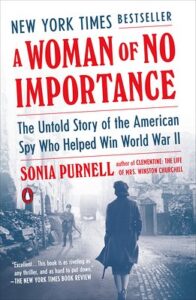
A Woman of No Importance: The Untold Story of the American Spy Who Helped Win World War II by Sonia Purnell
Sonia Purnell’s story of Virginia Hall, the American socialite who spied for the Allies, is as enjoyable for its novelistic elan as it is for Hall’s daring feats behind enemy lines. Purnell places the reader on the dusty roads of France in the terrible summer of 1940 as men, women, and children fled from onrushing panzer divisions. Among the flotsam of refugees was Virginia Hall, working as an undercover British agent. Over the next few years Hall, allied with French partisans, sprung resistance fighters from prison, set up safe houses, transmitted radio messages and otherwise gummed up German efforts to subdue the French people. Her efforts led a frustrated Gestapo chief to order, “She is the most dangerous of all allied spies. We must find and destroy her.”
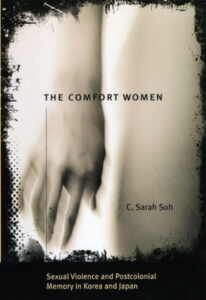
The Comfort Women: Sexual Violence and Postcolonial Memory in Korea and Japan by C. Sarah Soh
Beginning in 1931 with its attack on Manchuria, the Imperial Japanese Army and Navy broadcast its power throughout Asia with a brutality borne from the racist notion other Asians were not the equal of the Japanese. Part of this brutal regime was the euphemistically named “Comfort System” where women of the occupied territories—Chinese, Filipino, but mostly Korean—were conscripted into sexual servitude to the soldiers of the Rising Sun.
Rather than presenting the Japanese as solely responsible, Soh, a Korean-American professor at San Francisco State University, presents a nuanced thesis. She argues the “comfort women” were the unfortunate victims of patriarchal East Asian societies. Devalued by their families, girls were forced to leave home at a young age, making them easy targets for wolfish Japanese and Korean recruiters of “comfort women.”
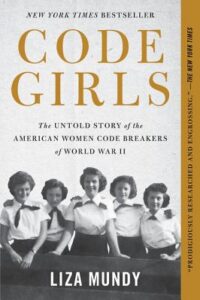
Code Girls: The Untold Story of the American Women Code Breakers Who Helped Win World War II by Liza Mundy
During the war, American cities and towns were full of uniformed WACs, WAVES, and bandana-wearing riveters. Unknown at the time (and for subsequent decades) was the fact that thousands of American women—college standouts, language experts—had been summoned to Washington to work in intelligence. Liza Mundy’s New York Times bestseller unearths the cadre of brilliant young women who helped break German and Japanese military codes during WWII. Among those rescued from obscurity is Agnes Driscoll, a brilliant cryptanalyst who played an indirect role in the greatest intelligence coup in naval history: the Battle of Midway, where four Japanese aircraft carriers were sunk in a single day.
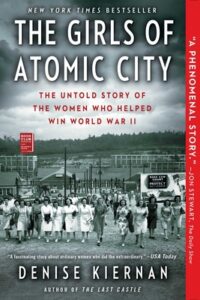
The Girls of Atomic City: The Untold Story of the Women Who Helped Win World War II by Denise Keirnan
Also of vital secrecy was the Manhattan Project, the program to design and build the atomic bomb. Denise Keirnan’s New York Times bestseller, The Girls of Atomic City recounts the stories of young women who worked at the vast Oak Ridge, Tennessee atomic installation during WWII (without knowing what they were working on and largely ignorant to the perils of radiation). One young women hid her pregnancy from her managers—which was cause for dismissal—by packing tools into the pockets of her apron. Driven by patriotism, she returned to work two days after the birth of her baby.
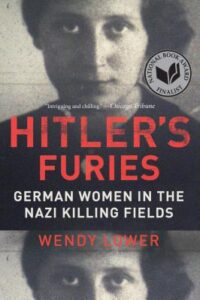
Hitler’s Furies: German Women in the Nazi Killing Fields by Wendy Lower
Like C. Sarah Soh’s book, Hitler’s Furies upends a time-worn narrative. In this case, it’s the notion that the German women of the Third Reich were focused, not so much on the war, but on producing the next generation of Germans. “Give me an athlete, and I’ll give you an army,” Hitler had promised them. A National Book Award Finalist in 2013, Hitler’s Furies reveals in chilling detail how German women with middle-class upbringings joined in the orgy of violence against Jews and Slavs. Even more chilling is how these nurses, teachers, and secretaries normalized their behavior.
__________________________________

The Confidante: The Untold Story of the Woman Who Helped Win WWII and Shape Modern America by Christopher C. Gorham is available from Citadel Press.
